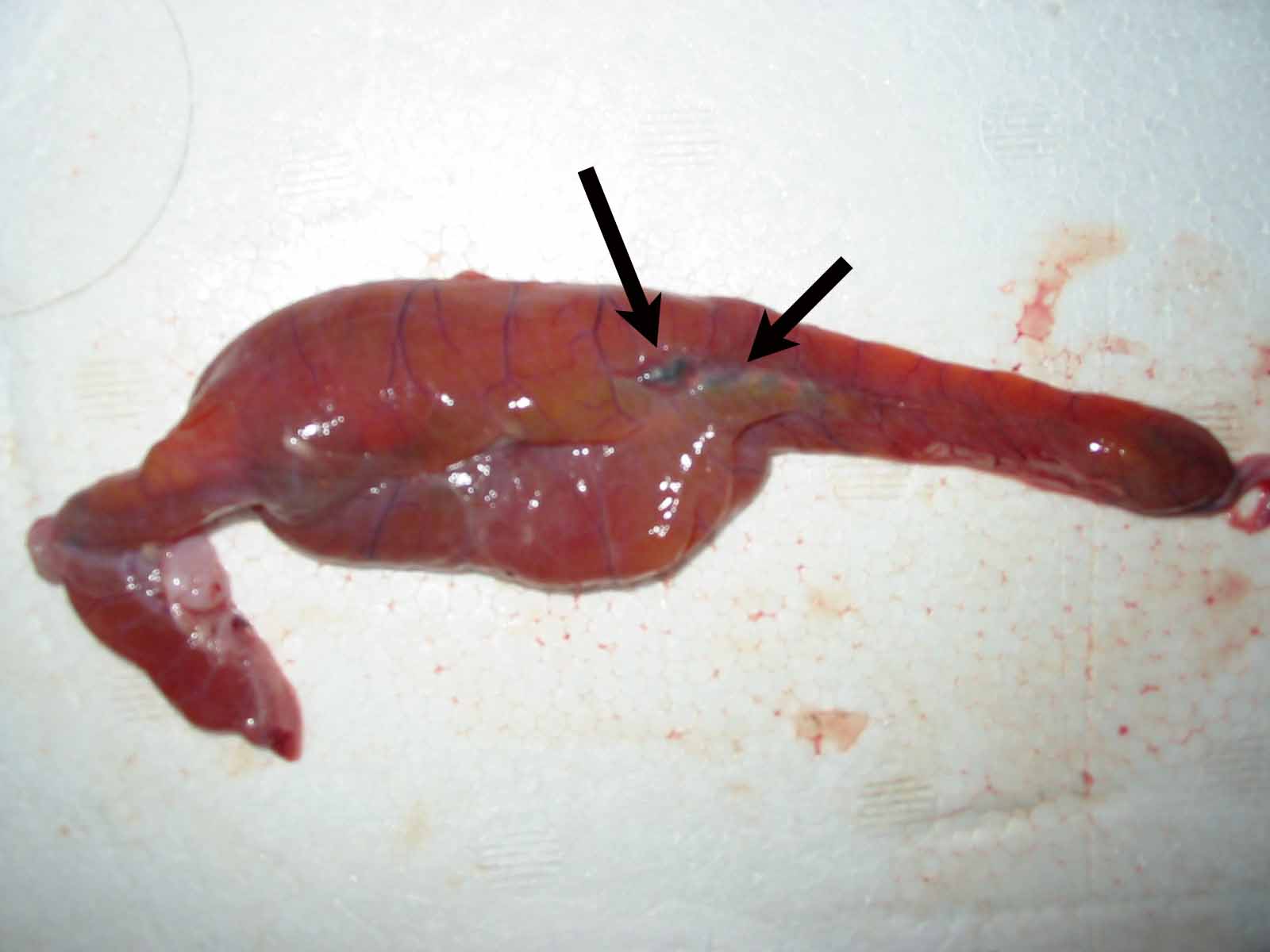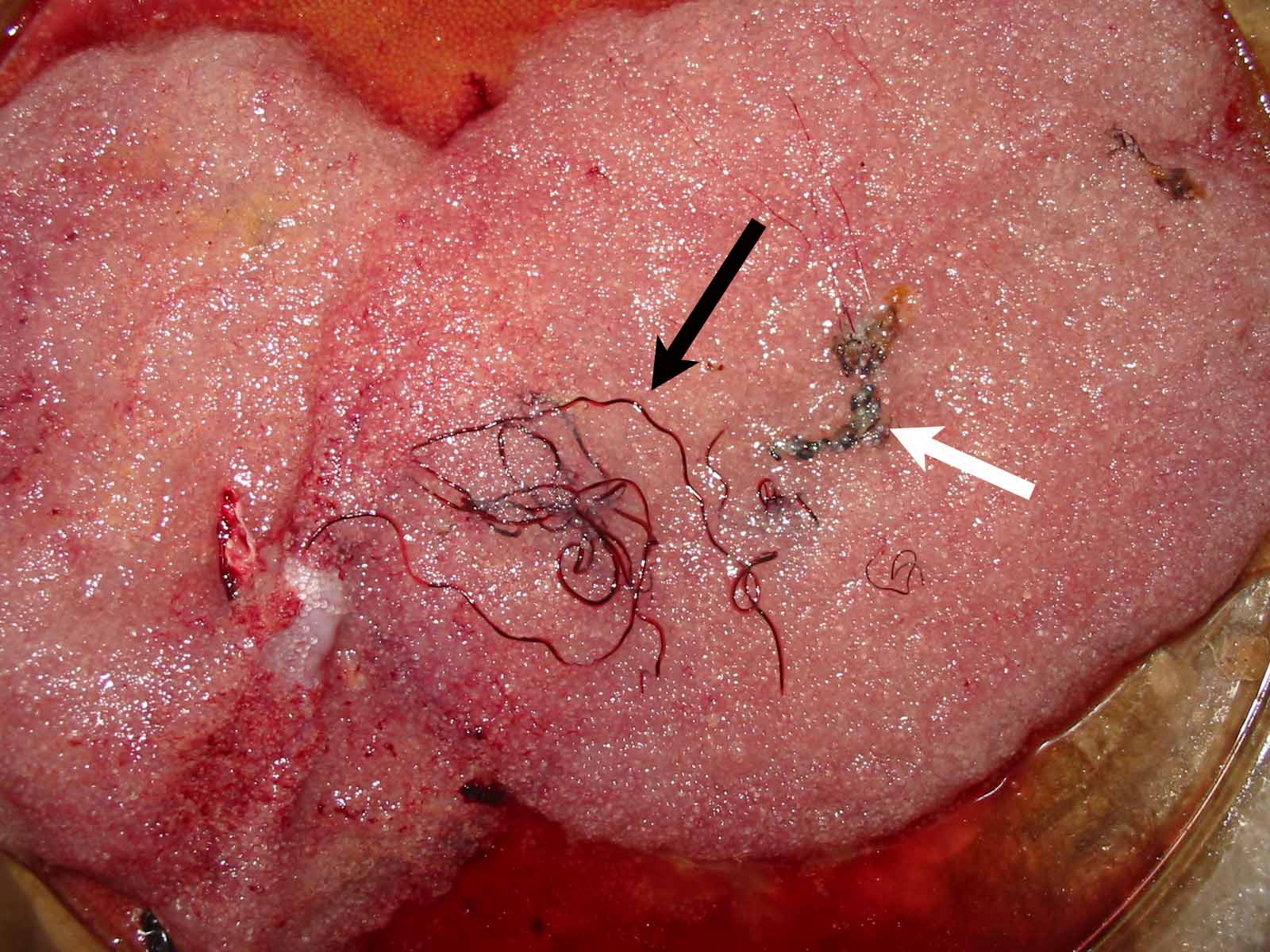
| Parasite | Philometra lateolabracis |
|---|---|
| Taxonomy | Nematoda, Secernentea, Camallanida |
| Host | Japanese sea bass (Lateolabrax japonicus) |
| Infection site | Gonad |
| Clinical sign | Reddish worms are observed in the gonad (Figs. 1 and 2). |
| Parasitology | Only female (>20 cm in length) is visually observed. On the other hand, male is much smaller (only several cm). Life cycle is not elucidated. Fish is probably parasitized by the parasite after ingestion of the intermediate host, e.g., small crustaceans. P. lateolabracis migrates from the digestive tract to the gonad where it matures and spawns (Ogawa, 2004). Thereafter, the adult females die due to the host reactions and leave their remnants in host’s gonad. Previously, similar nematodes from red sea bream and chicken grunt were reported as P. lateolabracis, but recent morphological and molecular studies indicate that these parasites are different species from P. lateolabracis (Quiazon et al., 2006). |
| Pathology | The parasite dies after spawning due to the strong host reaction. |
| Health hazard | Since this parasite is not infectious to human, it is harmless in food hygiene. |
| Diagnosis | Check the morphology of the parasite from the gonad. |
| References | Ogawa, K. (2004): Metazoan
diseases. Infectious and parasitic diseases of fish and shellfish.
(Wakabayashi, H. and K. Muroga), Koseisha
koseikaku, pp. 381-405. (In Japanese) Quiazon, K. M., K. Ogawa and T. Yoshinaga (2006): Taxonomical studies on philometrid nematodes infecting marine fishes of Japan. Abstract of the meeting of the Japanese Society of Fisheries Science in 2006, p. 88. |


Fig. 2. Live (black arrow) and dead (white arrow) worms ofP. lateolabracis
Fig. 1. P. lateolabracis (arrows) found in the ovary of Japanese sea bass
(Photos by Karl Marx Quiazon)